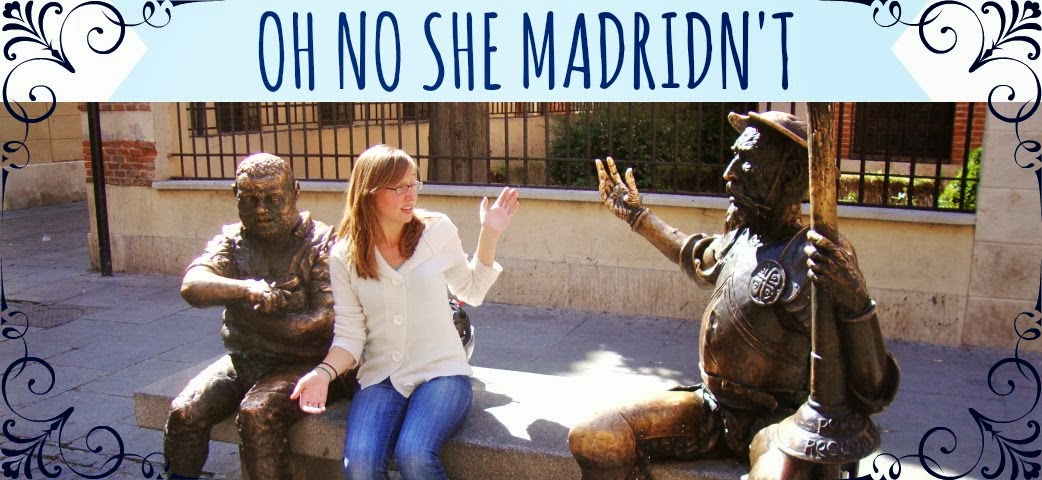Lamp post
We began again in the Plaza Real, which housed Gaudí's first (and only) work for the city of Barcelona: this lamp post.
When Gaudí finished the lamp post, the city of Barcelona only paid him half of what he was promised. He took them to court, won his money that he was rightfully owed, and vowed he would never work for the city again.
This was good for his art, because working in the private sector gave Gaudí higher budgets and greater freedom in his works.
Güell Palace
The first building of Gaudí's that we saw was Güell Palace - yes, that's the same Güell as Güell Park.
Casa Batlló
Next we saw Gaudí's Casa Batlló. Gaudí remodeled this building in 1904-06; it was originally built in 1877.
The roof (as seen above) is supposed to represent a dragon's scales, and the chimney is St. George's sword that killed the dragon.
I believe admission here was 17 euro per person, so I did not later come back to tour inside. If this is what Gaudí could do with a restoration, many were interested to see what Gaudí could build from scratch.
La pedrera (Casa Milà)
The people soon found out when Gaudí designed La pedrera (the quarry), built between 1905-1910. Sitting just up the street, opposite Casa Batlló, La pedrera contains no 90 degree angles in the whole design.
In 1984 it was declared a UNESCO World Heritage site. Admission was about 14 euro, I believe, and you're only allowed in the first floor and the roof -- so again I didn't return later for an inside visit. That's alright though, because you can take a virtual tour of Casa Milà here - for free!
And then we were off to the metro to see Gaudí's most famous work: The Sagrada Familia.
Sagrada Familia
The Sagrada Familia is a large church designed by yours truly, Gaudí. Gaudí became involved in the project in 1883, and it was less than a quarter of the way finished when he died in 1926.
Construction passed the halfway point in 2010, and the project has a completion estimate of 2026 (a hundred years after Gaudí's death).
Our tour guide spectated that as long as the church is unfinished, the city can continue to charge 14 euro per person to go inside. But once it's completed, they can no longer charge. So he thinks it's very possible that the completion date gets pushed back. The Spanish have been taking their sweet time with the construction of the church.
This is what the Sagrada Familia will look like once it's finished:
I'll have to come back once it's done to see the final product.
















No comments:
Post a Comment